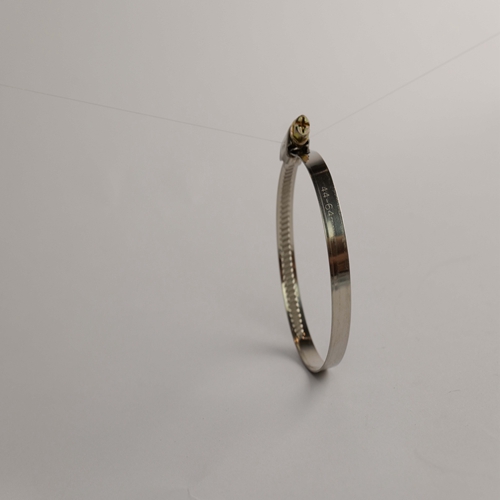- Phone:+86-17331948172 +86-0319-8862898
- E-mail: inquiry@puxingclamp.com
ಸೆಪ್ಟೆಂ . 24, 2024 19:52 Back to list
High-Quality 304 Stainless Steel Strip for Versatile Industrial Applications
The Versatility and Applications of 304 Stainless Steel Strip
304 stainless steel strip is a widely recognized material in various industries, renowned for its excellent corrosion resistance, high strength, and aesthetic appeal. As austenitic stainless steel, this grade is composed primarily of iron, chromium (18%), and nickel (8%), giving it superior durability and making it ideal for a multitude of applications.
One of the most compelling properties of 304 stainless steel is its resistance to oxidation and corrosion. This characteristic is due to the high chromium content, which forms a passive layer of chromium oxide on the surface. This layer not only protects the underlying metal from corrosive elements but also allows the steel to maintain its integrity even in harsh environments. Hence, 304 stainless steel strip is commonly used in applications exposed to moisture and various chemicals, such as in the food processing, pharmaceutical, and chemical industries.
Another advantage of 304 stainless steel strip is its ability to withstand high temperatures. With a melting point of approximately 1400 to 1450 degrees Celsius, it can be utilized in high-heat applications, making it suitable for components subjected to heat and pressure, such as heat exchangers and boiler systems. The material's durability under extreme conditions further enhances its value across different sectors.
The manufacturing process of stainless steel strips involves cold rolling, which provides a uniform thickness and enhances the surface finish
. These strips are typically produced in a variety of thicknesses and widths, allowing for customization based on specific industrial needs. The versatility in dimension means that 304 stainless steel strips can be tailored for different applications, such as automotive, construction, and exterior architectural elements.304 stainless steel strip

In the automotive sector, 304 stainless steel strips are utilized for exhaust systems, fuel tanks, and structural components, owing to their lightweight and high-strength properties. These materials contribute to the overall efficiency of vehicles while ensuring durability and longevity. The strip's aesthetic appeal also makes it a popular choice for decorative elements in automotive design.
Furthermore, in the construction industry, 304 stainless steel strips are often utilized for railings, columns, and facades, providing not only functional support but also contributing to an aesthetically pleasing environment. The shiny surface finish of the strips enhances the visual appeal of buildings, making them a favorable choice for architects and designers.
The food and beverage industry continues to be a significant user of 304 stainless steel strips, particularly in the fabrication of food processing equipment, storage tanks, and cooking utensils. The material's non-reactive nature ensures that it does not leach harmful substances into food and beverages, thus maintaining safety and hygiene standards.
In terms of maintenance, 304 stainless steel strips require minimal upkeep. With regular cleaning, they can maintain their luster and resist staining or rusting. This ease of maintenance adds to their appeal, especially in high-traffic areas where cleanliness is paramount.
In conclusion, 304 stainless steel strips are an invaluable asset across various industries due to their extensive range of properties, including corrosion resistance, high strength, and aesthetic versatility. Whether in the automotive industry, construction, or food processing, the applications of 304 stainless steel strips continue to expand, driven by their reliability and quality. As industries evolve, the demand for such durable materials will undoubtedly grow, making 304 stainless steel strips a cornerstone of modern manufacturing and design.
-
Precision High Quality Stainless Steel Strip Coils & Rolls
NewsAug.22,2025
-
Durable Adjustable Hose Clamps for Pipes & Radiators
NewsAug.21,2025
-
Heavy Duty Hose Clamps: Premium Stainless Steel & Adjustable
NewsAug.19,2025
-
Large Stainless Steel Adjustable American Type Hose Clamp - Hebei Pux Alloy Technology Co., Ltd
NewsAug.18,2025
-
Large Stainless Steel Adjustable Hose Clamp - Hebei Pux Alloy|Durable Corrosion Resistance&Adjustable Design
NewsAug.18,2025
-
Large Stainless Steel Adjustable Hose Clamp - Hebei Pux Alloy Technology Co., Ltd
NewsAug.18,2025




